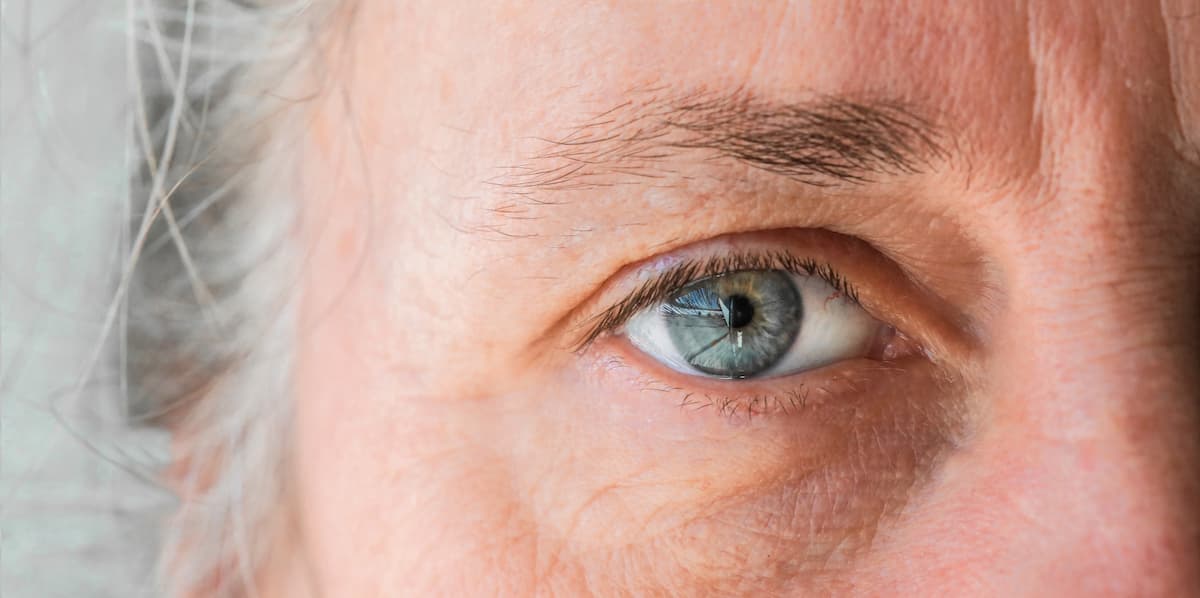Publication
Article
Digital Edition
Are your patients suffering in silence with dry eye disease?
Author(s):
By taking a proactive approach to treatment, ophthalmologists can identify the “silent sufferers.”
(Image Credit: AdobeStock/Katarina)

Simple interventions can significantly improve quality of life for patients with dry eye disease (DED) and prevent it from progressing to visually deleterious biometric changes. But before we can treat DED, we need to identify it. Patients with DED are often “silent sufferers” who complain about ocular discomfort to friends and family (who may well have similar problems), yet don’t realize that they have a treatable problem they should discuss with their doctor. We can make a major impact just by finding our silent sufferers and offering them a few clear, uncomplicated interventions.
Dry eye’s slow, insidious beginning
DED is a chronic, progressive condition that starts insidiously and gradually creeps up on patients, eventually becoming a significant detriment to quality of life. This makes it difficult to detect in its earliest stages, when signs and symptoms are far less noticeable and distressing. Over time, individuals learn to tolerate a wide variety of symptoms, including tearing, itching, burning, and the classic symptom of eye dryness. Further complicating patients’ perceptions, many DED symptoms overlap with other diseases.
DED’s fluctuations can also be confusing. DED often fluctuates seasonally and with lifestyle changes. For example, my cases tend to spike in the winter when the heat is on. Patients can also have decreased tears from insufficient hydration and experience more evaporation from prolonged visual tasks. Paradoxical symptoms of tearing and itching can be symptoms of a concomitant condition—most commonly allergies. In short, DED sneaks up on patients and is sometimes obscured or confused with other eye problems.
Finding the silent sufferers
To find our silent sufferers, we need to take a proactive approach, beginning with a validated questionnaire or discussion. I ask patients, “Do you ever have any pain, burning, itching, or dryness?” In the conversation that follows, I dissect the symptoms. The exam that follows reveals tear volume, staining, lid margin involvement, meibum quality, and meibomian gland dropout. If the patient has DED, meibography and osmolarity offer more information and a baseline for evaluating the efficacy of treatment.
To explain the exam findings to patients, I might say, “You have a very common condition called dry eye disease, which explains the symptoms you mentioned earlier. As a result, you have dead cells on your cornea and the oil glands in your eyelids are clogged.” I explain their staining, show them the missing oil glands in meibography, and share their osmolarity numbers. The images and numbers help gain patients’ enthusiasm and acceptance, which are essential for managing a chronic disease.
Simplified 2-part treatment
We have many varied options to alleviate DED. However, initiating multiple simultaneous interventions and changes to patients’ lifestyles can create confusion for both the patient and the clinician. In my experience, patients respond well when we keep it simple.
First, I like to select the best 1 or 2 therapies for the individual. At this point, patients also benefit from stopping deleterious self-treatment (eg, with preserved, inferior-quality artificial tears). In one common scenario, a patient with moderate dryness often benefits from punctal plugs and a high-quality, preservative-free artificial tears. We now have several good-quality options, such as iVIZIA (Thea Pharma Inc), Refresh (Allergan plc), Soothe (Bausch + Lomb), Systane (Alcon), and TheraTears (TheraTears). For a patient whose eyes are badly inflamed, induction therapy with a topical steroid such as loteprednol (Eysuvis; Alcon) is often effective, followed by artificial tears for ongoing therapy. Patients with acute aqueous-deficient DED may benefit from an immunomodulator such as Cequa (Sun Pharmaceutical Industries Limited), Restasis (Allergan), or Xiidra (Bausch + Lomb).
Second, I suggest alterations to 1 or 2 of the patient’s most glaring lifestyle and environmental influences. For example, I often suggest that all-day computer users situate their work environment away from blowing vents and fans. Sometimes we can help patients eliminate or reduce a drying systemic medication (eg, diuretics for hypertension) by working with their primary care physician, and it’s often possible to reduce a patient’s dosage of antihistamine pills and/or limit use of the pills to allergy season. Montelukast is an excellent lipoxygenase inhibitor nondrying allergy oral medication that works well for my allergy patients with DED.
Case study: Active lifestyle, dry eyes
When a 45-year-old woman came to me for a routine examination, questioning revealed that she had episodic dryness and fluctuating vision. She had a very busy life, with 2 active kids, a consulting business that she ran from home, and a hobby of distance cycling. Her history pointed to environmental and hormonal stresses, as well as frequent use of over-the-counter allergy pills and vasoconstrictor eye drops. The exam showed mild staining but no significant meibomian gland dropout.
It is common to see cases like this, where patients have discomfort, a dearth of physical findings, and no history of using proven therapies for DED. I start by discontinuing current eye drops, suggesting environmental alterations and recommending a specific, effective artificial tear. In this case, the patient discontinued her current eye drops and agreed to limit the allergy pills. I recommended iVIZIA, a povidone/hyaluronic acid/trehalose artificial tear formulation, used morning, noon, and night, as well as for challenging activities like cycling. I also explained that while working from home on her computer, she should avoid blowing air, stay hydrated, position the screen downward, and take breaks.
When I brought the patient back at 6 months, she greeted me with a smile. She said she was much more comfortable working on her computer and even cycling. The lifestyle changes and artificial tear therapy fit easily into her busy life. Because the physical findings were minimal at baseline, we didn’t repeat point-of-service diagnostic testing (eg, meibography), but I continue to discuss her symptoms at every annual visit. Like many silent sufferers, this patient with DED was easy to find during a routine visit, and a few simple interventions have allowed her to use her eyes comfortably for a better quality of life.

John Sheppard, MD, MMSc, FACS
Sheppard is division medical director for EyeCare Partners and president of Virginia Eye Consultants, where he is an external diseases specialist and corneal and cataract surgeon. He is also a professor of ophthalmology, microbiology, and molecular biology at Eastern Virginia Medical School in Norfolk.

Newsletter
Don’t miss out—get Ophthalmology Times updates on the latest clinical advancements and expert interviews, straight to your inbox.





